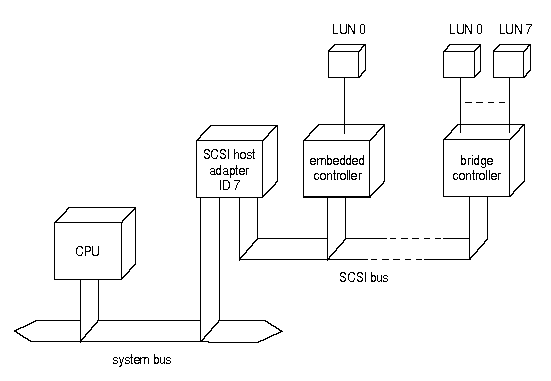
|
|
Each controller on the SCSI bus (including the host adapter) has an address referred to as its ``controller'' ID or ``target'' ID. Up to eight controllers may be present on a SCSI-1 bus with IDs from 0 to 7; up to 16 controllers may be present on a 16-bit Wide SCSI-2, Ultra-SCSI (SCSI-III), or Ultra2SCSI bus with IDs from 0 to 15. The host adapter itself is usually assigned ID 7.
Controllers may be placed in any order on the bus, but they must have a unique controller ID. The controller ID is usually set on the SCSI peripheral device using jumpers, DIP switch, or thumb-wheel. Refer to the adapter documentation for specific instructions.
A peripheral device connected to a controller is identified by its ``logical unit number'' (LUN). Bridge controllers can support up to eight devices with unique LUNs 0 to 7. However, most SCSI devices have a single embedded controller with a LUN of 0. The SCO OpenServer SCSI device drivers have only been tested on SCSI devices with embedded controllers.

SCSI bus addressing
SCSI host adapter drivers are configured into the kernel when you configure the first SCSI peripheral connected to a adapter. See ``Adding a SCSI peripheral device''. Host adapters of the same type as one already installed use the same driver; their only requirement is memory space for configuration information that is internal to the driver. If you wish to use the ability of certain host adapters to emulate other adapters, you must specify the correct device driver for the host adapter being emulated when configuring peripherals.
The SCO OpenServer modular SCSI interface provides a generic set of SCSI peripheral drivers that may be used with any of the supported hosts' adapter drivers. Each different type of host adapter that is installed requires its own driver to be configured into the kernel.